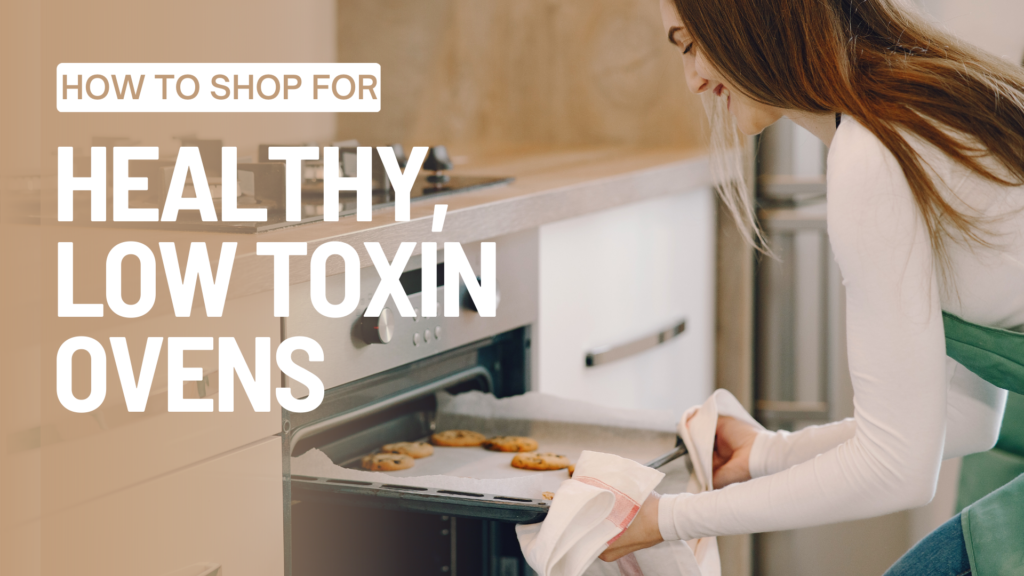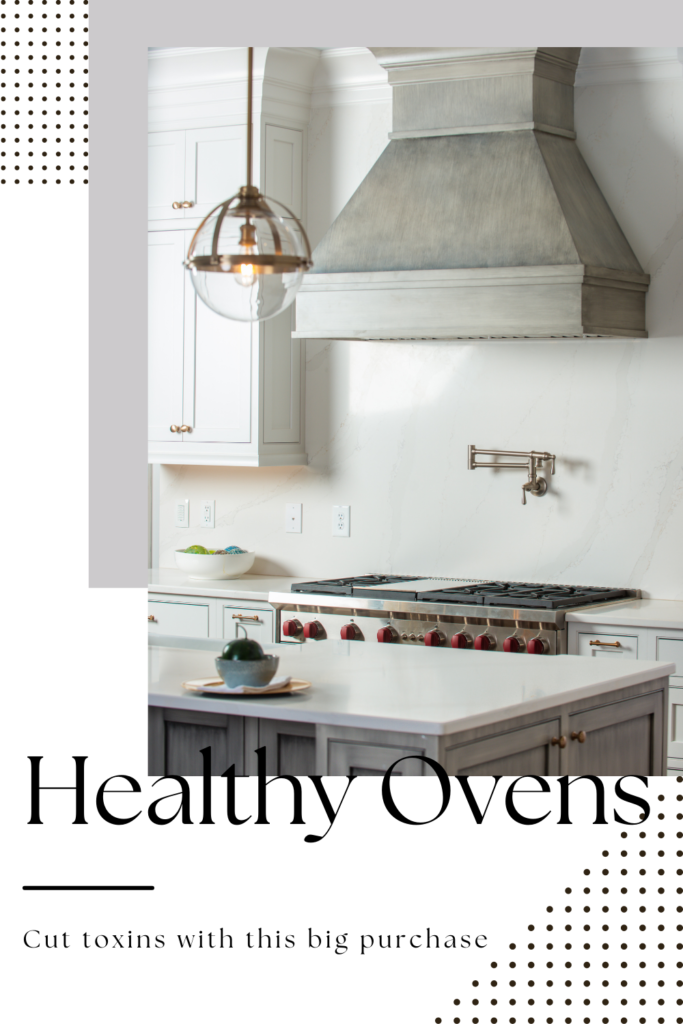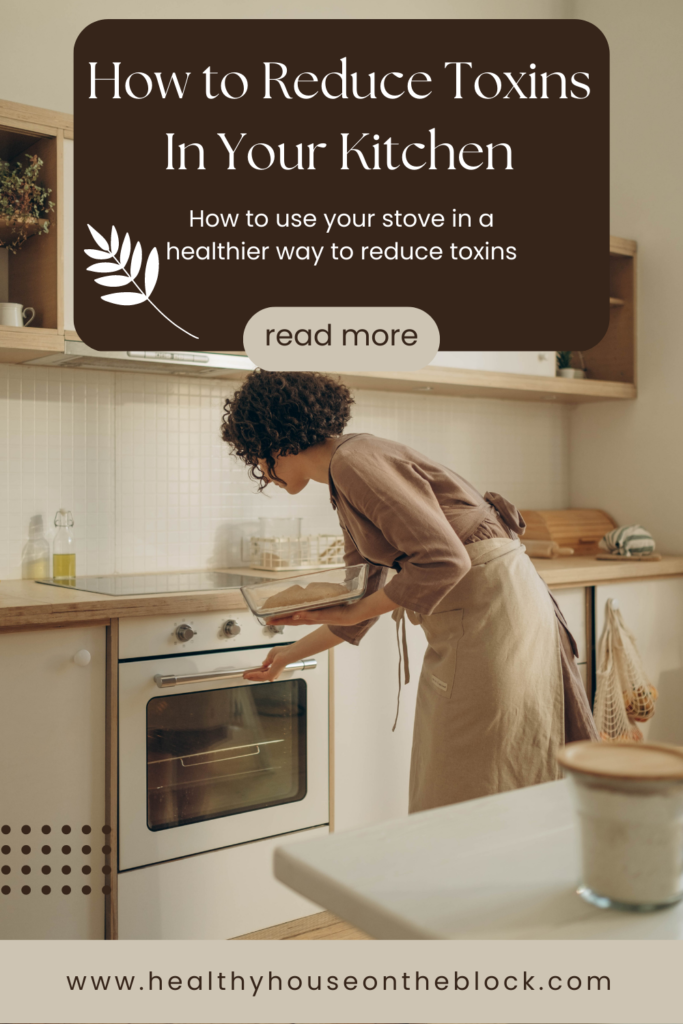
I don’t know about you, but I feel like we’ve shopped for ovens and done the gas vs. electric oven comparison WAY more times than I’d care to admit. In fact we just made a decision on what type of stove we’ll be getting soon (again). And believe it or not, you can actually make a healthy and less healthy decision when it comes to your stove.
I guess our oven troubles are a blessing in disguise because it’s given me SO many opportunities to research and decide what will be the healthiest option for our home.
The story of ovens in our house is quite commercial — beginning with an oven that started on fire Easter Morning of 2020 — one month into the pandemic, during an epic snowstorm covering Minnesota, with Easter church streaming live on our television.
Have you tried to cook an Easter Ham on the grill? It was good, but it just wasn’t the same. Left without any options (because appliances were a bear to find at that time), we got the only one available that didn’t require a long wait.
Come to find out, it hasn’t been our favorite oven and one year after we purchased it our half of the stove top burners stopped working when suddenly it was taking up to an hour to preheat our oven. Long story short, we’ve been told it might be worth it to get a new oven. So here we are yet again researching and debating the gas vs. electric oven vs. induction oven options.
And while some things I already knew, I did learn a little bit about even healthier options when it comes to a new oven.

GAS VS. ELECTRIC OVEN
I’ve been saying this to my clients for years, but a gas stove is not necessarily the healthier choice when it comes to cooking. Gas appliances in and around your home create combustion gas in order to create a flame for heat. Gas furnaces and gas water heaters both have combustion gas that can remain in our homes if not properly vented.
The difference with a gas stove is that there often is no direct vent outside to pull combustion gas outside. Combustion gas must be pulled out by a vented fan directly above your stove. And quite often, the fan above your stove isn’t always vented directly outside, but instead it circulates air around the room.
You might be wondering what the big deal is if there’s a little combustion gas in your home while you’re cooking. The difference is you’re usually standing in close proximity to the nitrogen oxide, carbon monoxide and formaldehyde that are being given off while cooking.
There is the concern that we keep our homes very closed up and have very few air exchanges going on inside. This means that any combustion gas inside will stay inside.
Combustion air inside has contributed to poor indoor air quality for decades. And we are finally realizing that the exposure to this type of toxin inside the home is negatively impacting asthma rates in children and increased risk of respiratory disease in adults. (STUDY)

ELECTRIC OVEN VS. INDUCTION
So if the winner of the gas vs. electric oven debate is electric, let’s also put it up against an induction stove. Induction stoves are said to be much more energy efficient than a plain old electric stove, but at what cost?
Well, the cost is our health. Induction stoves give off high levels of electromagnetic radiation (EMFs). In fact, so much higher than a typical electric stove, that the EMF radiation exceeds the maximum exposure limits set by the International Commission of Non-Ionizing Radiation Protection. So in terms of a healthy home, they are advised against.
Keep in mind that EMF exposure is highest next to the source, and so with induction ovens, you are near the source the entire time you’re cooking. And with induction stoves, when you touch the pan, you are technically making yourself a part of that current of energy that’s flowing through the pan as it heats.
So it turns out a plain old, electric oven is the way to go in this age old debate of gas vs. electric stove vs. induction stove.
THINGS TO KEEP IN MIND WHEN PURCHASING A NEW OVEN
Avoid Wi-Fi and Smart Stoves: Wi-Fi can be an easy way to avoid electromagnetic radiation inside your space. By choosing to forgo a smart stove, you can completely avoid introducing unnecessary EMFs into your space as well.
Look for RoHS Certified Stoves: This certification places strict restrictions on the use of hazardous materials and substances such as lead, cadmium, mercury, chromium, PBBs and PBDEs. It can be difficult to find this certification on standard ovens being sold in the US, but there are a few.
A note about Prop 65 Ovens: The Prop 65 standards cover 800 + toxins and chemicals that have been known to cause cancer or birth defects or reproductive harm. Because ovens use mercury, lead and some other toxins in the interior of the appliance, there are VERY few stores that are Prop 65 certified.
That being said, you oftentimes are not exposed to these toxins unless the product malfunctions or it is used improperly.
Avoid Teflon Coating: Some ovens can contain teflon-type coatings and release toxic fumes when being heated up. It’s best to avoid a teflon interior if you can.

WHAT TO DO IF YOU CAN’T MAKE A CHANGE TO A NEW OVEN RIGHT NOW
Even if you can’t get a new stove right now, there are things you can (you know while you mull over the gas vs. electric stove vs. induction stove debate).
Ventilate Your Space: The NUMBER ONE thing I tell all my clients — get fresh air into your cooking space as much as possible. You can do this through an open window and you can do this through a vented fan. Even if you just have a recirculating fan above your stove, it’s better than nothing. Make it a habit to get fresh air into your space during and after cooking.
Avoid Self Cleaning Function: The self cleaning function on many stoves increases the temperature so drastically that it burns off left over food particles, creating toxic air inside your home. I do like steam clean options, which don’t get nearly as hot and there are fewer fumes. Otherwise, clean out your oven the old fashioned way with some baking soda and kitchen cleaner.
Pay Attention to Location: If your stove backs up to a bedroom, be sure that the bed is not against the wall where your oven is, this is especially true of induction ovens and electric ovens (which can still give off some EMFs). It’s best to have beds on a wall without any sort of major appliance on the other side to protect the body against EMF exposure while sleeping.

TOP PICKS FOR HEALTHY OVENS
Liebherr: One of the first companies to be fully compliant to the RoHS Certification. They’ve found ways to avoid heavy metals in their products and make their products more durable to avoid a short lifespan resulting in a higher carbon footprint.
Viking: While these ovens have self- cleaning options, I don’t recommend using this feature. However, because they are self cleaning, they often must be much better insulated. Viking is manufactured in the USA
Blomberg: This company is more eco-conscious and so they have many products that are RoHS certified. They are manufactured in Germany.
Miele: German manufactured and has been said that it off-gasses very little even from the start. They have verified that all materials covered under the Prop 65 Warning are fully enclosed and encapsulated to ensure there is no exposure.
Whether you’re in the market for an oven now, or you plan to purchase one down the road, remember that there are always ways to make each purchase a little bit healthier for your home environment.

Share this:
- Click to share on Facebook (Opens in new window) Facebook
- Click to share on LinkedIn (Opens in new window) LinkedIn
- Click to share on Reddit (Opens in new window) Reddit
- Click to share on Pinterest (Opens in new window) Pinterest
- Click to print (Opens in new window) Print
- Click to share on X (Opens in new window) X








What stove did you end up going with and how has it been? Have you measured it for EMF? WE are in the process of needing a new oven and have gas currently, but many electric stoves seem to still read very high in magnetic fields.
Thank you for this article. I have been searching for a few hours looking for information on low toxin ovens. I am in the market for one right now, and your information has been super helpful. I don’t believe Liebherr manufactures ovens anymore (at least I could not find one). I currently have a 48″ Viking that has lasted 20 years and may purchase another after reading your article. My initial thought was to buy a 48″ Wolf, but I understand they are having issues with their blue oven coating (ceramic?) leaving shards of coating in food. I wonder if there has been any research on this problem, as many ovens have this same coating. I believe the Viking does as well.
Just wondering what your personal oven choice would be? Thank you for your time, D.Snyder